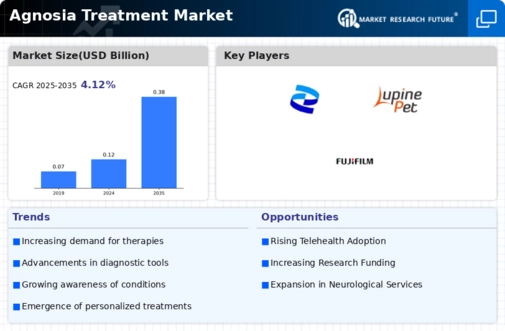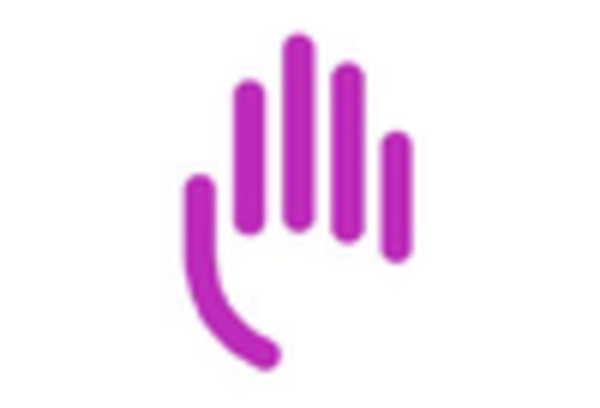Increased Focus on Mental Health
The heightened focus on mental health and cognitive well-being is influencing the Agnosia Treatment Market. As societies become more aware of the importance of mental health, there is a growing recognition of cognitive disorders, including agnosia. This shift in perception is leading to increased funding for mental health initiatives and research, which may result in more comprehensive treatment options for individuals affected by agnosia. Furthermore, public health campaigns aimed at destigmatizing cognitive impairments are likely to encourage individuals to seek help sooner, thereby increasing the demand for agnosia treatments. The emphasis on holistic approaches to health, which encompass both physical and mental well-being, is expected to further drive the Agnosia Treatment Market as healthcare providers adapt to meet the evolving needs of patients.
Emergence of Telehealth Solutions
The emergence of telehealth solutions is transforming the landscape of the Agnosia Treatment Market. With the rise of digital health technologies, patients now have greater access to specialized care, regardless of geographical barriers. Telehealth platforms enable healthcare providers to deliver cognitive assessments and therapeutic interventions remotely, which is particularly beneficial for individuals with mobility challenges or those residing in underserved areas. This shift towards telehealth is likely to expand the reach of agnosia treatment services, making them more accessible to a broader patient population. Additionally, the convenience of virtual consultations may encourage more individuals to seek treatment, thereby increasing overall demand within the Agnosia Treatment Market. As telehealth continues to evolve, it may play a pivotal role in shaping the future of agnosia treatment.
Advancements in Diagnostic Techniques
Recent advancements in diagnostic techniques are likely to enhance the identification and understanding of agnosia, thereby influencing the Agnosia Treatment Market. Enhanced imaging technologies, such as functional MRI and PET scans, facilitate more accurate diagnoses of agnosia and its underlying causes. This improved diagnostic capability not only aids in the timely initiation of treatment but also fosters research into more effective therapeutic strategies. As healthcare professionals become more adept at recognizing the nuances of agnosia, the demand for specialized treatment options is expected to rise. Moreover, the integration of artificial intelligence in diagnostic processes may further streamline the identification of agnosia, potentially leading to a more tailored approach in the Agnosia Treatment Market. This evolution in diagnostics could significantly impact patient outcomes and treatment efficacy.
Rising Incidence of Neurological Disorders
The increasing prevalence of neurological disorders, including Alzheimer's disease and other forms of dementia, appears to be a primary driver for the Agnosia Treatment Market. As the population ages, the incidence of cognitive impairments rises, leading to a greater demand for effective treatment options. According to recent statistics, approximately 50 million people worldwide are living with dementia, a figure projected to triple by 2050. This surge in cases necessitates innovative therapeutic solutions, thereby propelling the growth of the Agnosia Treatment Market. Furthermore, the correlation between neurological disorders and agnosia underscores the urgency for targeted treatments, which may include pharmacological interventions and cognitive rehabilitation therapies. The increasing burden on healthcare systems due to these conditions further emphasizes the need for advancements in agnosia treatment.
Growing Investment in Neurological Research
The increasing investment in neurological research is a crucial factor driving the Agnosia Treatment Market. Governments and private organizations are allocating substantial funds to explore the complexities of brain disorders, including agnosia. This financial commitment is fostering innovation in treatment methodologies, ranging from pharmacological advancements to novel therapeutic interventions. For instance, research initiatives focusing on neuroplasticity and cognitive rehabilitation are gaining traction, potentially leading to breakthroughs in agnosia treatment. The global market for neurological drugs is projected to reach USD 100 billion by 2025, indicating a robust interest in addressing cognitive impairments. Such investments not only enhance the understanding of agnosia but also pave the way for the development of effective treatment options, thereby expanding the Agnosia Treatment Market.


















Leave a Comment